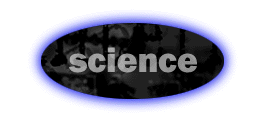


Roots
& Culture
When I was attending U.C. Santa Cruz, Rastafarianism was extremely popular
among the student body. All the white kids thought, "Cool! A religion
where you're *supposed* to smoke pot." Many students grew make-shift
dreadlocks, donned green, yellow and red knit hats, and walked around saying
things like, "Jah love, dude." The silliness ended after graduation.
The pressing need to earn a living drove Rasta pretenders into the working
world.
The pages of Roots and Culture don't even mention marijuana, and while you'll
find links to reggae sites, you won't find any references to Bob Marley
and his musical progeny. Rather, the site's emphasis is on Ethiopian religion
and history. Within the context of Roots doctrine, the term Ethiopian denotes
all people of African origin - Africans, African Americans, and in fact
all the world's people who, according to scientific evidence, descended
from a common African ancestor.
Despite this broad inclusion of the globe's entire populace, much of the
site's content focuses on the country of Ethiopia itself, and the religious
teaching of Emperor Haile Selassie I. You'll find a quiz about Selassie
I that is clearly intended to teach instead of test - if you quickly want
an answer to one of the questions, you can activate a nifty drop-down device
for immediate results.
Selassie I is portrayed as a visionary who unified Ethiopians worldwide.
A section of quotes details the Emperor's wisdom during the politically
turbulent times just before World War II. Another section is devoted to
Marcus Garvey, a seminal figure in the American Black Renaissance of the
20s and 30s, and the leader of the "Back to Africa" movement.
The theme here is on leaders of black unification. Throughout the site,
you'll find references to God and the Bible presented in such a way as to
suggest that religion cannot be separated from the political realm. To educate
people in Ethiopian religious practices, the site includes a page with information
on Masqal Baal, the Commemoration Day of the True Cross which is held nationwide
across Ethiopia on September 17th.-WKC
![]()
![]()
![]() A
A
The
Discovery Museums
Ahh, an example of how to promote a science museum - effectively! The layout
and top level organization is clean and looks swell enough. More than enough
useful information about the logistics of the museum are readily available
- directions, hours of operation, phone numbers and special exhibit information.
And the slide show tours offer a strong impression of what you might actually
find if you visit the real-life museum. It's extremely well done and a good
example of how people can use the Web to enhance local communities.-SK
![]()
![]()
![]() A-
A-
Dr.
Bob's Home Page
Doctor Bob is a smart one. He'll tell you about the sun, in simple basic
terms. He'll tell you about the space shuttle, break down the mysteries
of "that amazing ice," and brief you on the facts about tsunamis
(giant tidal waves). This is an extremely useful and entertaining Web site
for science fans, I just wish he'd learn that dark, heavily patterned backgrounds
make it difficult to read thin and light text. Even more the frustrating
because the oft unreadable text is actually very interesting.-SK
![]()
![]()
![]() B-
B-
Earth and Universe
For the astronomy aficionado or hobbyist, the Internet is a great place.
There are thousands of NASA pages, and you don't have to be outside in the
middle of the night getting eyestrain peering through a telescope. Earth
and Universe adds a lot of astronomical visual content to the Web, with
pictures of stars in various stages of formation, plus many other cosmic
formations. There is also a Telescope Documentation Index with all sorts
of articles on telescope systems. Unfortunately, the whole thing is slow
as a rock, and the organization is poor.-WKC
![]()
![]()
![]() B-
B-
Flora of China
It starts with a splash of color (though a bit slow). Clicking a little
deeper will reveal some somewhat cheesy icons and standard layout techniques,
though admittedly, it's done well. There lies mucho content here. Pictures,
illustrations and maps lace the pages nicely - all with size labels so you
know how big an image is going to be *before* you click. The site also boasts
a hefty search engine, and if that ain't enough, it provides links to other
flora search engines at affiliated institutions. Overall, it's a botanist's
dream.-SK
![]()
![]()
![]() B+
B+
Museum of Science
and Industry Chicago
This museum has some really cool things in it, the kind of things that you
don't expect to see in a museum. There is a German U-Boat and a Boeing 727
inside that you can walk around in. I believe in the 727, because I saw
pictures of it, but the U-Boat will have to remain unconfirmed. My point
is that the Web site has a very small slice of the over 2,000 exhibits that
are in the physical museum. What is shown on the site makes it pretty enticing
to come and see the museum, which may be the master plan, but with all the
material it possesses, the museum could be a great contributor to the richness
of Web content.-WKC
![]()
![]()
![]() B+
B+
Virtual Chaos:
A Theory of Everything
More X-files than science, the authors of the virtual chaos theory, who
wish to remain anonymous, propose that the simple statement "1+2=3"
permeates all phenomenon, and from this, they have concluded that time begins
in the middle heads towards the beginning and the end simultaneously, the
former being a red shift, and the latter being a blue shift. Maybe I'm stupid,
maybe the Web isn't the right medium to promote such far-flung theory, but
reading this hasn't changed my life significantly. Can you solve this puzzle?-WKC
![]()
![]()
![]() B-
B-


